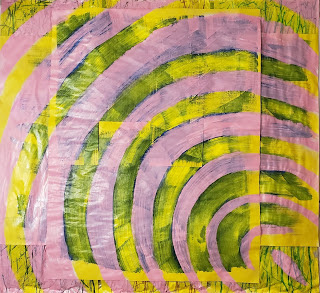Use a pencil or pen.
Lines - Ink - use brush or pen nib or stick.
Wash - Ink - use a brush and lots of water.
Drag a string that was dipped in paint or ink or gesso.
Cut out shapes, place another paper/texture to show through cut out window.
Frottage - place paper on a textured surface/area, rub surface with a pastel/charcoal/soft pencil.
Make/use stencils.
Splatter - a toothbrush works well.
Drip
Sew/stitch.
Spray
Walk on the surface.
Crinkle/wrinkle.
Stain with tea and./or coffee.




















































